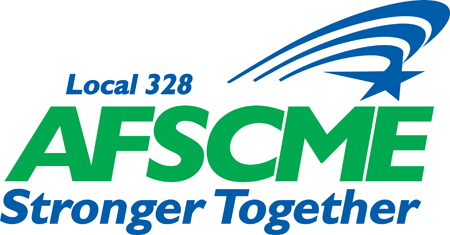“Walkout Looms For OHSU, Labor Union”
“Walkout Looms For OHSU, Labor Union”So read the Sept. 19, 1995, headline of The Oregonian.The article continued: “Tensions are building at Oregon Health Sciences University as nearly half of its workforce prepares to go on strike Thursday over wages.“For me, this is everybody’s loss, but I’ve got to follow my union,” said Genaro Pesis, a University Hospital phlebotomist whose job it is to draw blood.”The last AFSCME strike at OHSU was 20 years ago last month. Fewer than 500 members of the bargaining unit who were here during that strike are still working at OHSU. More than 5,000 members of our union have no memory of it.At the time of the strike, OHSU had just become a public corporation and was facing its first big test as an independent entity. AFSCME negotiations had dragged on all spring and summer. Both sides had submitted their proposals to an independent fact finder. Local 328 embraced the fact finder’s report and OHSU rejected it. The lines were drawn.The formerly state employees at OHSU had just had four years without a pay increase due to a state budget crisis and economic downturn. As many as 50 AFSCME job classifications were paid well below the market. After four years without offering an increase, in 1995 OHSU offered 2.5% across the board and additional salary increases for 20 of the 50 underpaid classifications.It wasn’t enough.Philip Curtis was chair of AFSCME 1995 bargaining team: “…We hadn’t experienced a strike in that local before; we weren’t prepared for a strike and didn’t have the first clue about what we should be doing…. The strike was surprising because the bargaining team thought we had communicated that we thought we had the best deal we could…we had a [low] turnout and a lot of people within a particular group were very disappointed; they voted to strike and most other members didn’t vote at all.”Elisa Davidson recalled: “…Everywhere I went, I was trying to remind people not to forget to vote and everybody said ‘Vote? What vote?’ I had visions of 100 people showing up to vote and determining the fate of the workforce.”Elisa’s fears were well founded, as it turned out. Not many members voted, but those who did were highly motivated. It wasn’t long before many employees woke up to the surprising news that they would be going on strike.Elisa further recalled: “I voted to strike — I had been telling my husband, we had been putting food aside, paying several months of bills in advance, paid off the credit cards…we had known since June at the latest that things weren’t going well.” On Sept. 20, 1995, The Oregonian reported that following 13 hours of negotiations that ended in stalemate, OHSU had started to “cancel elective surgeries and divert emergency patients to other hospitals. “According to the newspaper, “the University upped its offer to a 3 percent across the board raise retroactive to August 1 — from its previous 2.5 percent offer.”“The Federation offered its own prescription: a 4 percent raise in two steps — a 2.75 percent increase on Oct. 1, followed by 1.25 percent increase on April 1, 1996.”Lois Davis, a university spokesperson, was “disappointed.”Meanwhile, OHSU was taking steps in its contingency plan — diverting ambulances and canceling elective surgeries, which was expected to reduce bed occupancy to 50 percent of normal. It was also frantically making arrangements with other hospitals to transfer patients if necessary.AFSCME Local 328 walked out at 12:01 a.m. on Thursday, Sept. 21, 1995.Philip Curtis: “We worked on picking a strike date, trying to communicate the best we could to get people to walk out. I’m not even sure we had email at that time, so we were leaving messages on the union hotline, word of mouth, trying to get people to commit. The strike wasn’t what we wanted, but there was a vote and no backing out now.”Elisa Davidson: “From inside the hospital I could hear the cheers, over and over, more and more cheering as more people joined the picket line.”“We had people lining the parking lot across from the emergency room, we had people on the street…a bunch of people carrying pickets; it was just everybody gathered together in a long line around the property, mostly around South Hospital.” “…We lined both corners of 45th and Vermont [at Gabriel Park] with picketers every day. A couple of doctors would come out and bring us coffee, buy us donuts — they were supportive of our strike. I took my darling two year old with me and she thought it was a blast to jump and shout and wave at everybody going by.”Bev Swanson recalled the start of the strike: “The first thing that comes to my mind was standing out on the turnaround at, I think it was midnight that we went on strike, and watch[ing] for people that actually came out and that was the exciting part; that when we saw the RTs and CNAs that were working at night, when they started coming out the door, there were nurses that were there for support. You always worry that if you throw a party that no one will come; well, they came.”
